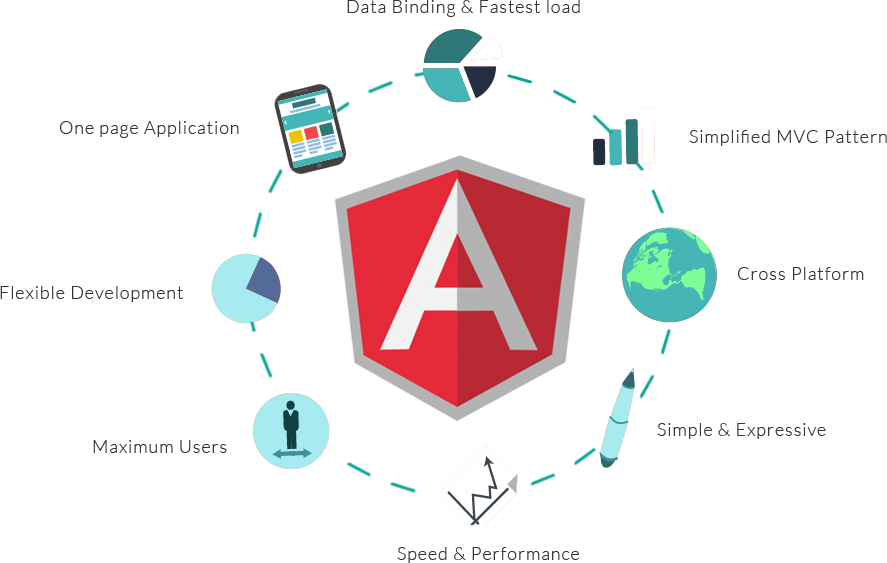Following Key Topics to Cover in Angular-
1) Introduction to Angular
- What is Angular?
- Key Features of Angular
- Angular Versions and History
- Angular CLI
2) Angular Architecture
- Components
- Modules
- Templates
- Services
- Directives
- Pipes
3) Angular Components
- Creating Components
- Component Lifecycle Hooks
- Component Communication (Input/Output)
- Template Syntax
- Component Styles
4) Angular Modules
- NgModule Metadata
- Feature Modules
- Shared Modules
- Lazy Loading
5) Angular Services and Dependency Injection
- Creating Services
- Injecting Services
- Providing Services
- Singleton Services vs. Instance Services
- HTTP Client
6) Angular Routing
- Introduction to Angular Router
- Router Configuration
- Router Links and Navigation
- Route Parameters and Data
- Lazy Loading Modules with Routing
7) Angular Forms
- Template-Driven Forms
- Reactive Forms (Model-Driven Forms)
- Form Validation
- Form Controls
- Form Groups and Form Arrays
8) Angular Directives
-
Built-in Directives (ngFor, ngIf, ngSwitch, etc.)
- Attribute Directives
- Structural Directives
- Creating Custom Directives
9) Angular Pipes
- Built-in Pipes
- Custom Pipes
- Pipe Chaining
- Pure vs. Impure Pipes
10) Angular Interceptors
- HTTP Interceptors
- Error Handling
- Request and Response Transformation
11) Angular Unit Testing
- Testing Components
- Testing Services
- Test Setup and Configuration
- Mocking Dependencies
12) Angular Best Practices
- Folder Structure
- Code Organization
- Optimizing Performance
- Angular Style Guide
Mastering Angular is essential for building modern,
scalable, and maintainable web applications. This
curriculum covers the fundamental topics needed to
become proficient in Angular development. By
understanding these concepts, you can create dynamic
and interactive web experiences for your users. Best
of luck with your learning journey!


